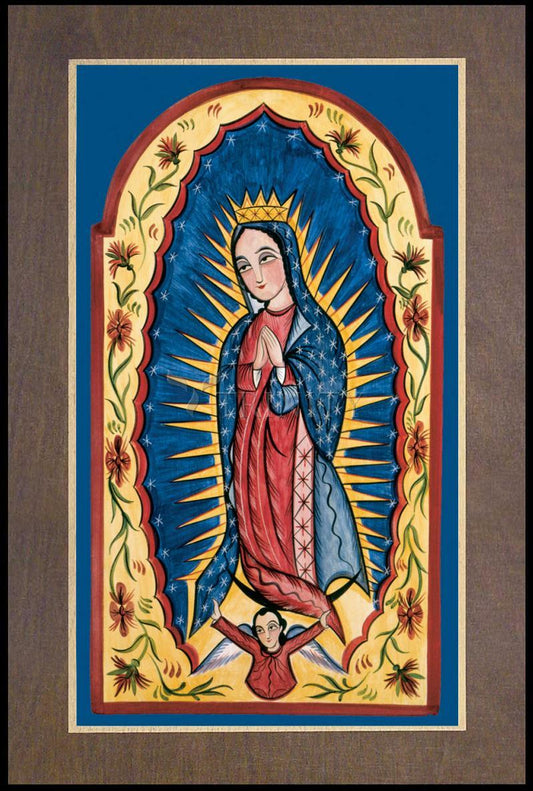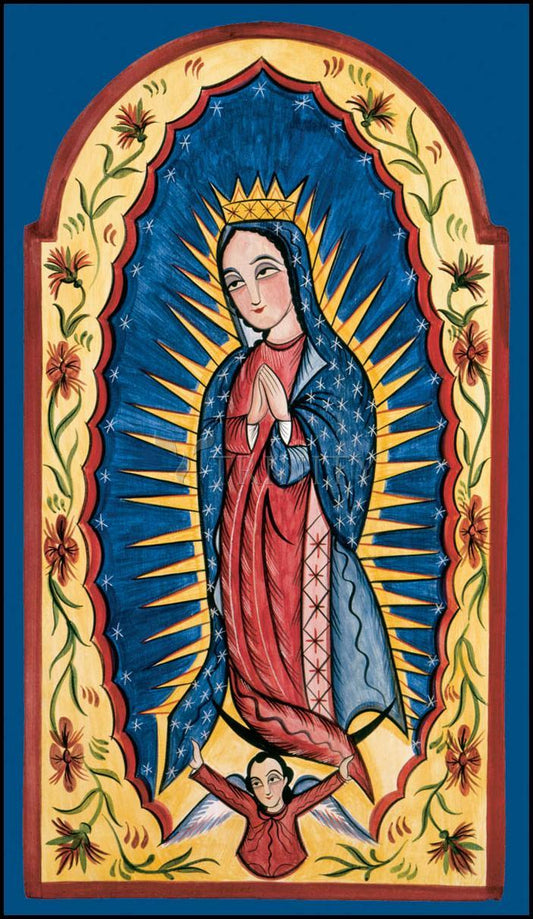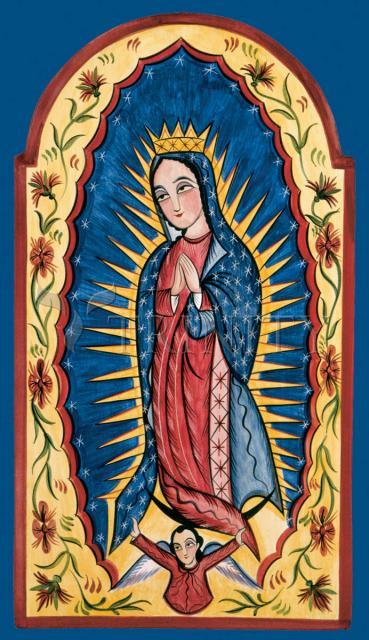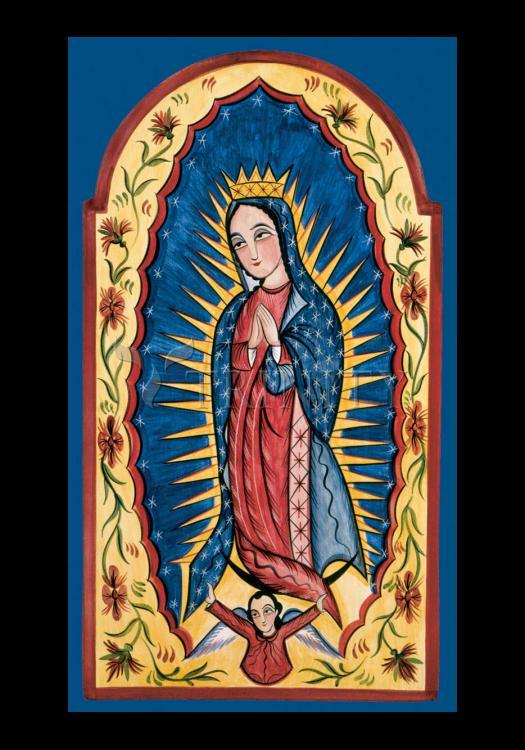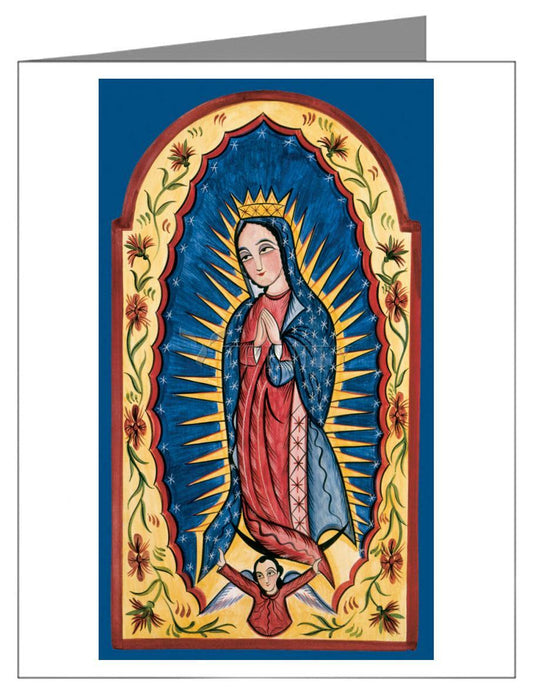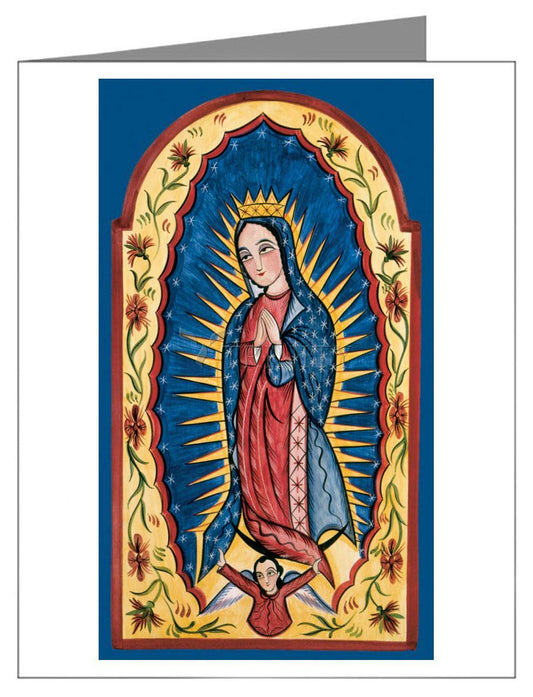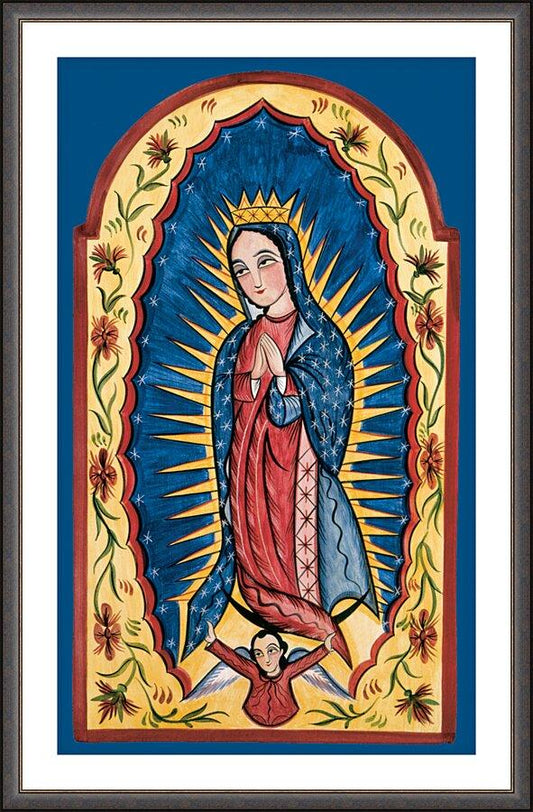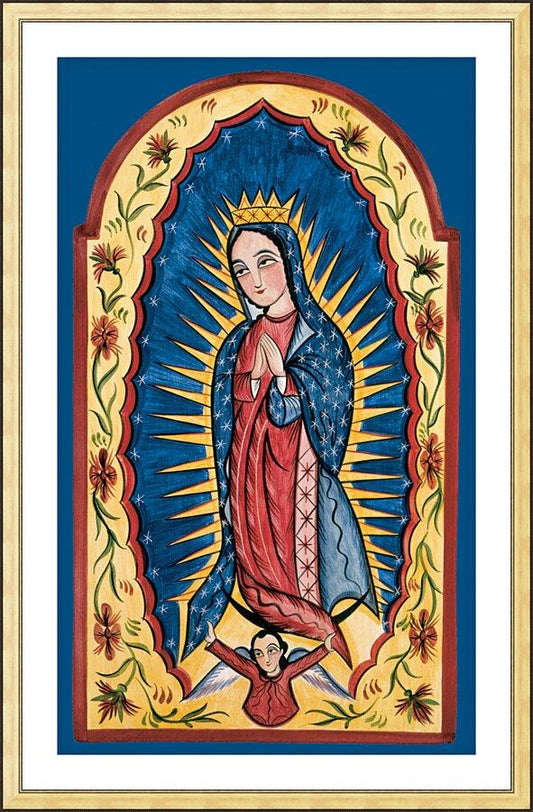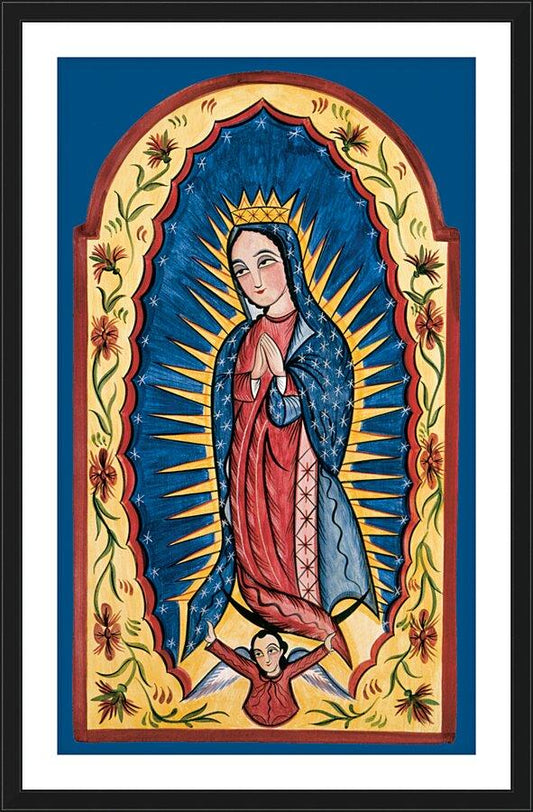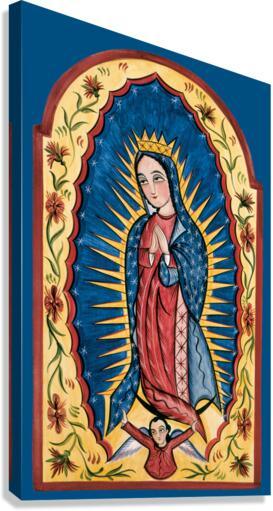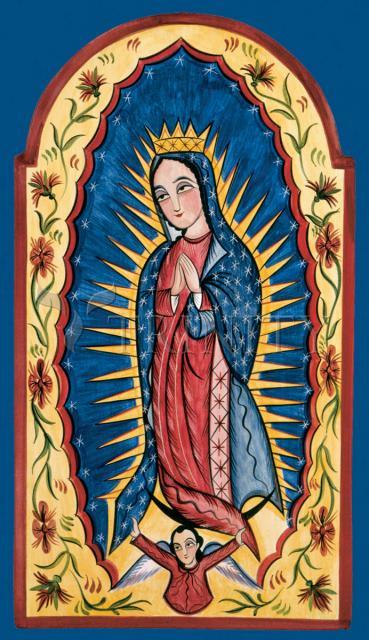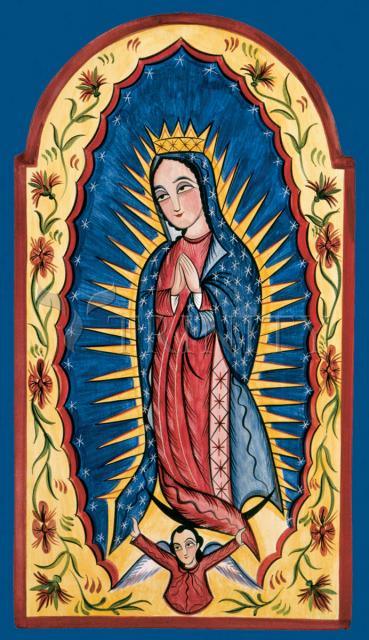The first printed account of the image and apparitions occurs in Imagen de la Virgen Maria, Madre de Dios de Guadalupe, published in 1648 by Miguel Sanchez, a diocesan priest of Mexico City.
The next printed account was a 36-page tract in the Nahuatl language, Huei tlamahuicoltica ("The Great Event"), which was published in 1649. This tract contains a section called the Nican mopohua ("Here it is recounted"), which we have already touched on above. The composition and authorship of the Huei tlamahuicoltica is assigned by a majority of scholars to Luis Laso de la Vega, vicar of the sanctuary of Tepeyac from 1647-1657. Nevertheless, the most important section of the tract, the Nican Mopohua, appears to be much older. It has been attributed since the late 1600s to Antonio Valeriano (c. 1531-1605), a native Aztec man who had been educated by the Franciscans and who collaborated extensively with Bernardino de Sahagun. A manuscript version of the Nican Mopohua, now held by the New York Public Library, appears to be datable to the mid-1500s, and may have been the original work by Valeriano that was used by Laso in composing the Huei tlamahuicoltica. Most authorities agree on the dating and on Valeriano's authorship.
These published accounts of the origin of the image venerated in Tepeyac increased interest in the identity of Juan Diego, the original recipient of the vision. In 1666 the Church, with the intention of establishing a feast day in his name, began gathering information from people who reported having known Juan Diego, and in 1723 a formal investigation into his life was ordered, where more data was gathered to support veneration. (In the meantime, a new Basilica church was built to house the image. Completed in 1709, it is now known as the Old Basilica.)
The image had originally featured a crown on the Virgin's head, but this disappeared in 1887-88. The change was first noticed on February 23, 1888, when the image was removed to a nearby church. Eventually a painter confessed on his deathbead that he had been instructed by a clergyman to remove the crown. This may have been motivated by the fact that the gold paint was flaking off of the crown, leaving it looking dilapidated. But according to the historian David Brading, "the decision to remove rather than replace the crown was no doubt inspired by a desire to 'modernize' the image and reinforce its similarity to the nineteenth-century images of the Immaculate Conception which were exhibited at Lourdes and elsewhere." What is rarely mentioned is that the frame which surrounded the canvas was lowered to leave almost no space above the Virgin's head, thereby obscuring the effects of the erasure."
Pope Leo XIII granted a Canonical Coronation to the image on 12 October 1895, and since then the Virgin of Guadalupe has been proclaimed "Queen of Mexico", "Patroness of the Americas", "Empress of Latin America", and "Protectress of Unborn Children" (the latter two titles given by Pope John Paul II in 1999). Under this title, she was also proclaimed "Heavenly Patroness of the Philippines" in July 1935 by Pope Pius XI both witnessed and signed by Cardinal Eugenio Pacelli, a designation he later rescinded in September 1942 upon becoming Pope Pius XII.
On 25 March 1966, Pope Paul VI presented a Golden Rose to the sacred image. Finally, under Pope John Paul II the move to beatify Juan Diego gathered steam. John Paul II took a special interest in non-European Catholics and saints. During his leadership, the Congregation for the Causes of Saints declared Juan Diego "venerable" (in 1987), and the pope himself announced his beatification on May 6, 1990, during a Mass at the Basilica of Our Lady of Guadalupe in Mexico City, declaring him "protector and advocate of the indigenous peoples," with December 9 established as his feast day.



